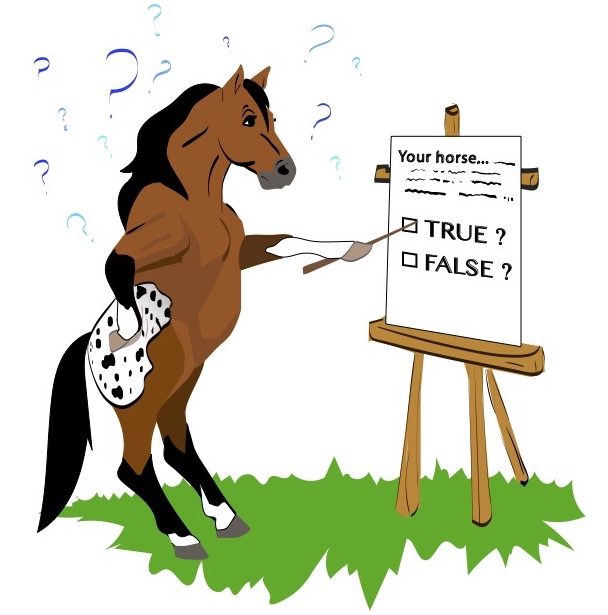
Illustration by Navah Rae Adams
Answer the questions, then check at the bottom for the key!
BY JENNIFER FORSBERG MEYER
1. ‘Gooseneck’ refers to
A) a serious rider injury.
B) a conformation fault.
C) a type of horse trailer.
2. True or false: When loading your horse into a trailer, you should tie his lead rope (or secure him with the trailer tie) before closing the door or positioning the partition.
T / F
3. When transported untied in an open stock trailer, horses tend to orient themselves facing toward the
A) front.
B) rear.
C) side.
4. True or false: Painting your horse trailer can make it less appealing to potential thieves.
T / F
HOW’D YOU DO? (Answers below.)
1. C is correct. Unlike a bumper-pull or “tagalong,” a gooseneck trailer has a section that extends over the back of the hauling truck, with a hitch that attaches to the bed of the truck rather than to the truck’s frame at the rear of the vehicle. Though more expensive, goosenecks can include sleeping areas plus are easier to turn than bumper pulls.
2. F is correct. But you knew that, right? Always close your trailer’s doors before securing your horse in the trailer, and untie him before opening the doors to unload. This ensures he can’t attempt to exit the trailer while tied—a surefire panic-inducer. (Learn more with these essential trailer-safety do’s and don’ts.)
3. B is correct. Horses being hauled in the rear-facing direction are able to absorb the motion of a sudden slow-down with their strong hind ends, and therefore may balance more easily. (But what about sudden accelerations? Here are more pros and cons on horse trailer types.)
4. T is correct. We got a bit tricky here, as what we actually mean is painting your trailer in a distinctive way—that is, with your ranch name, horse’s name, a rustic scene, or even just a bright color or unusual pattern. Doing so definitely wards off theft, as thieves much prefer to nick a trailer that looks like every other rig on the road, for obvious reasons.











